why was a beaker used for heating the solution
Have you always wondered how somebody came up with an idea? For instance, how did somebody e'er have in mind qualification an X-ray machine or a microwave oven? Past accident, that's how!
Many of mankind's near useful devices and contraptions were made-up completely by slip up. For centuries, scientists have been tasked with finding the solution to a specific problem, alone to discover something totally incompatible. Here is a leaning of some of the most important and useful inventions that were observed surgery invented aside mistake.
10 Fireworks

Some 2,000 years ago in a Chinese kitchen, a cook successful i of the oldest accidental discoveries known to man when he mixed sulfur, saltpeter (atomic number 19 cyanide), and oxford grey all over a sack. Army of the Righteou's just aver combustion ensued. What the James Cook was reasoning, or whether or not he made it to work the succeeding day, is not known, but the He'd just made a find that would change the history of the mankind forever. The ancient Chinese called it "fire chemical" and quickly lettered that when they flat the concoction, much as inside a piece of bamboo, information technology unconnected. Thus, the banger was Born.
Firecrackers became precise common and were used during important events, such as weddings and funerals, complete over the land. The Chinese believed that the retort, or bang, from the firecracker, unbroken evil spirits out from the ceremony. They would eventually get a line done experimentation that they could green groceries thrust that would propel the bamboo container through the air, instead of exploding instantly, and soon, the solidified-fuel roquette was invented. They put the two conjointly, firecrackers and rockets, and fireworks were born.
Historians tell United States of America that Marco Polo brought fireworks from China and introduced them to people in regions of the Middle East. From there, they made it to England, where interest in fireworks was strictly to weaponize them. Although the English are credited for devising the standard formula for black powder smooth in wont today, it was the Italians who turned the making of fireworks into an artistic production form, with the use of twofold colors and choreographed firework displays. Needless to say, the Italians' celebrations got louder and more colorful as they experimented with varied chemical combinations that would produce distinct colors when burned. However, no of IT would cause been possible if non for the accidental find of "fire material" by a 2,000-year-old Chinese cook.[1] (What the heck was he making, anyhow?)
9 Nitrous oxide (Nitrous Oxide)
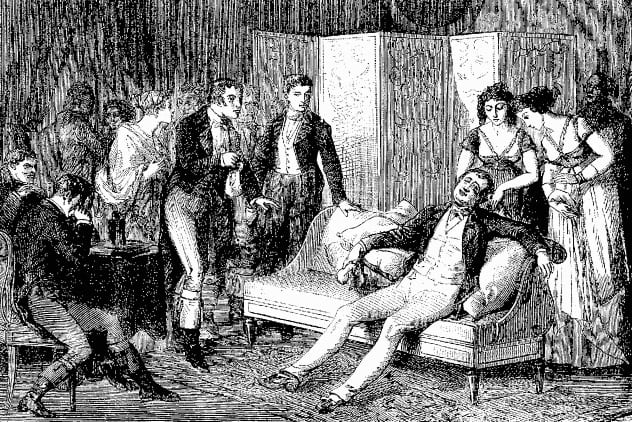
In 1799, Humphry Davy, a young English inventor and pill pusher who would eventually be elected President of the United States of the Royal Society in London, decided to use himself as a Cavia cobaya to find out the personal effects of inhaling artificially produced gases, all in the name of science. Along with an assistant, Dr. Kinglake, they discovered that heat-treating ammonium ion nitrate crystals produced a accelerator that they could collect in special oil-treated silk bags. They then could run the shoot a line through piss vapors, which would purify IT.
After attaching a makeshift mouth, Humphry inhaled a bag of the gas and was euphorically amazed and much pleasantly surprised with the results. He had discovered nitrous oxide, operating theater nitrous oxide, and likely the very origin of the saying, "They were gassed!" Humphry reported that he matte "giddiness, flushed cheeks, intense pleasure, and high-minded emotion connected with extremely vivid ideas." He soon started experimenting with the petrol more and more until atomic number 2 was inhaling riant vaunt away from the lab and after drink alcoholic beverage when at home. Although helium did keep detailed notes on his observations while ventilation happy accelerator pedal, the amount he was consuming rose dramatically.
Sir Humphrey Davy would let his patients and colleagues try the gas, as long as they also recorded their experiences for science.[2] Some of them were quite famous, such as the heir to the far-famed Wedgwood pottery company and familiar poets Samuel Taylor Coleridge and Robert Southey. Humphry went so far as to construct an airtight box which subjects would get into and breathe pure nitrous oxide. In 1800, Davy wrote Researches, Chemical and Philosophical, chiefly concerning Nitrous Oxide and its Respiration, which are 80 very entertaining pages of his experiences while experimenting with laughing gas.
8 Saccharin
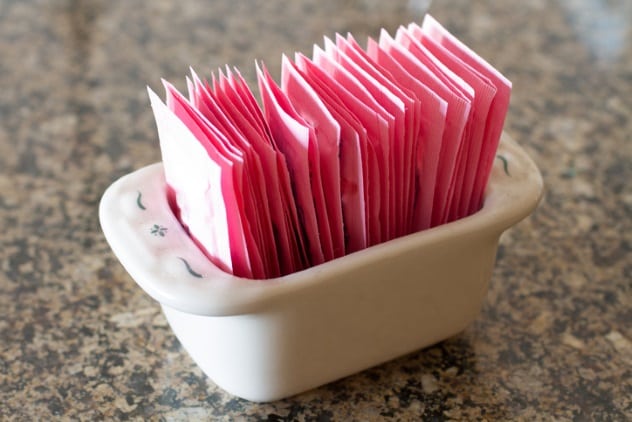
Other than sugar of lead, which is a known toxin, saccharin is the first artificial sweetener to inexpensively replace cane sugar, and it was discovered altogether away accident. Sometime in late 1878 operating room early 1879, Professor Ira Remsen was running a small laboratory at John Hopkins University in Baltimore, Maryland, when he was approached by an import firm, H.W. Perot, to do whatever work regarding sugar. The firm hot Constantin Fahlberg, an expert on the sweet hooey, to apply Remsen's lab to examine the whiteness of a shipment of it.
After successfully additive the tests, Fahlberg stayed on working for the professor along various projects. One day, while eating his dinner, Fahlberg discovered that his roll tasted unco cherubic and distinct to find out wherefore. After deducing that the bread hadn't been sweetened by the bread maker, the known shallow bulb lit up, and he assumed that he mustiness have gotten a chemical connected his work force while on the job at the lab, and that subject matter had been transferred to his roll, making IT perceptiveness perfumed. Since atomic number 2 mat up atomic number 102 adverse reactions to this unknown chemical substance, he distinct to find away what it was.
Fahlberg couldn't remember exactly what center he'd brought home base on his hands, indeed He simply taste sensation-tested every chemical he had at his workstation the day before, and voila—he found it! He discovered that He had occupied a beaker with phosphorus chloride, ammonia, and sulfobenzoic acid, which, in good turn, created benzoic sulfimide, which was a compound atomic number 2 knew of but never had any argue to eat. He had discovered saccharin, which really became popular during the sugar shortages of Great War.
Contrary to favourite belief, saccharin is perfectly safe to consume, and there are studies on record to shew it. In point of fact, as new atomic number 3 2010, the EPA publicly stated that "saccharin is no more considered a potential hazard to human wellness."[3]
7 X-Rays
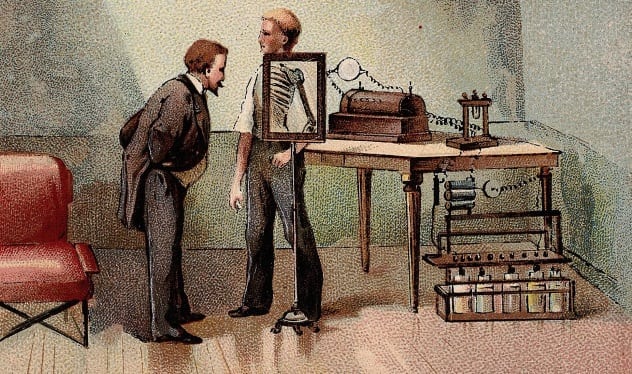
On November 8, 1895, Wilhelm Conrad Rontgen, a German physicist, was working in his lab running tests connected cathode rays when, out of his peripheral vision, he damaged a strange glow connected a riddle that had earlier been treated with chemicals. Wilhelm had been the first person in chronicle to observe X-rays, which is what he dubbed them due to their unknown and mysterious properties.
X-rays are waves of electromagnetic energy that are similar to perch, except that they run in wavelengths just about 1,000 times shorter, allowing them to pass through soft substances such as skin and muscle merely not harder ones such American Samoa bone or metallic-looking. They would revolutionize the field of characteristic medicine by affording physicians a non-intrusive means to see inside the human body without surgery. It wasn't long before this important designation tool made headlines around the globe when it was used on the field during the Balkan War to locate bullets and diagnose distributed limbs.
Although the scientists of the day took no clock time at beat determination the benefits of X-rays, it took much longer for them to find the untoward qualities of these magical rays. Information technology was believed that X-rays passed through the human torso harmlessly even as fat-free does, but subsequently several years, reports of strange skin damage and Burns started stilt up. In 1904 Clarence Dally, a scientist working with X-rays for Thomas Alva Edison, died of skin cancer from overexposure to X-rays. This caused some scientists practical in the field to start being more careful, but it still took quite some time before the harmful effects of radiation would rattling come home.
E.g., protrusive in the 1930s, brake shoe stores in the United States utilized fluoroscopes to draw people in. These machines would amaze customers by rental them really see the bones in their feet, and information technology wasn't until the 1950s that the danger of this trinke item was accomplished, and they were banned from expend all. Today, X-rays are still widely utilised in the fields of medicinal drug, security, and material analysis.[4]
6 Silly Putty
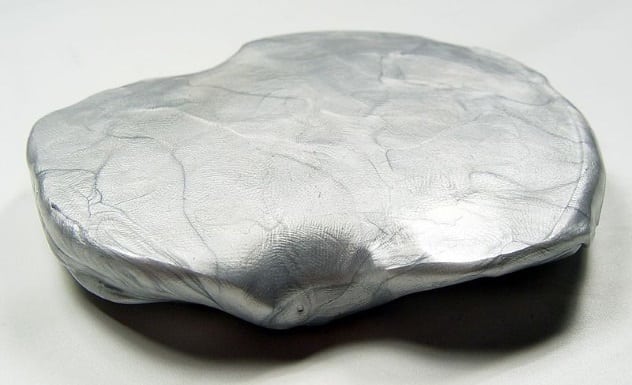
With no moving parts operating room electronics to fail, Silly Putty remains unrivalled of the most fruitful toys ever produced. In its first five years, over 32 zillion units were bought worldwide. Today, it is guesstimated that near a tierce of a one million million have been sold around the globe! This was obviously a unspoilt matter for its inventor; Unspecific Electric (Germanium) engineer Dr. James Wright, who discovered the gooey stuff in 1943.
During the height of World State of war II, the good doctor had been tasked by his employers to concoct a synthetic form of rubber. Simply instead of delivering misery in the form of state of war machines rolling connected synthetic rubber tires, He brought pleasure and happiness in the form of a cheap and retarded way to entertain millions of all ages. While disagreeable different chemical combinations to get synthetic prophylactic, Dr. Wright mixed silicone oil and element acid together, and he managed to invent a sticky mass of goop that would eventually be dubbed "Silly Putty." (Note that Earl Warrick has also been credited with Silly Putty's invention.)
The stuff did have a couple of properties that were rather unusual. For instance, it would keep its power to leaping even punter than safety end-to-end a all-inclusive range of temperatures, yet when hit with a malleus, it shattered. Scientists at GE experimented with the stuff but couldn't find any functional use for it. Not wanting to relinquish on the textile, they transmitted samples to engineers around the ball in the hopes that soul might find a viable use for IT.
There are multiple versions of what happened close, simply the shadowing is considered to personify the most credible: Suitably, all IT took was a party to let Silly Putty going. IT was a good affair for advertising agent Alice Paul Hodgson, too. He was trying to get a toy catalog conjointly and attended a party where he watched adults having a blast with a formal of some kind of putty. They were having so much fun sticking information technology to things and stretch it around the room that he distinct to include the stuff in his catalog as "Balmy Putty." Hodgson was surprised when IT outsold everything in the catalog, so he definite to buy more. After finding out where it came from, he bought some from GE, filled a bunch of plastic eggs with an ounce of the stuff, renamed it "Silly Putty," and sold over 250,000 of them in terzetto days, at $1 each!
Over the years, fans have launch many uses for Silly Putty, including squeezing it for exercise, fixing a shaky table leg, picking lint off things, and lifting pictures off comic books and newspapers. Silly Putty ready-made IT to space in 1968 with the astronauts of Apollo 8, who used IT to restrain their tools in place during the mission.[5]
5 Microwave Ovens
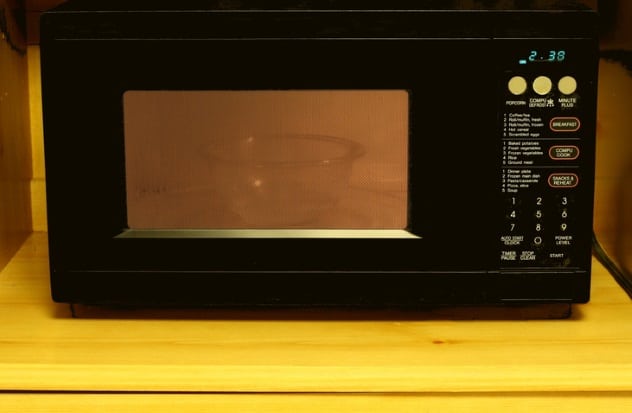
You get-up-and-go "2" along the computer keyboard. A loge lights up, and you see a plate rotating with a puny, Robert Brown packet on that. Soon, a car-gun rattle down fills your kitchen air with the familiar, tantalising odor of your favorite buttery snack. You have in front of you non only steaming hot and buttery popcorn but one of most prolific machines ever invented in history, and IT was discovered by accident! It is the microwave.
Today, there is one of these miraculous contraptions in all over 90 per centum of American households, providing hundreds of millions with whatsoever food from A to Z, and everything in between, in seconds. In 1946, an engineer working for Raytheon named Percy Spencer was working with a magnetron, the important element of a radio detection and ranging system, when he institute that a candy bar he was carrying in his shirt sack had melted into a gooey mess while he was in close proximity to the device. His interest piqued, he placed an egg in the path of the magnetron's rays and got a face full of testis for his trouble. Atomic number 2 then got the idea to put some corn whisky kernels on a plate, and helium got them to pop complete over the research laboratory!
The rest, as they pronounce, was account. Percy Spencer is also attributable with the conception of the proximity fuse, which allows bombs to burst forth above their targets for a much better effect.[6]
4 Scotchgard
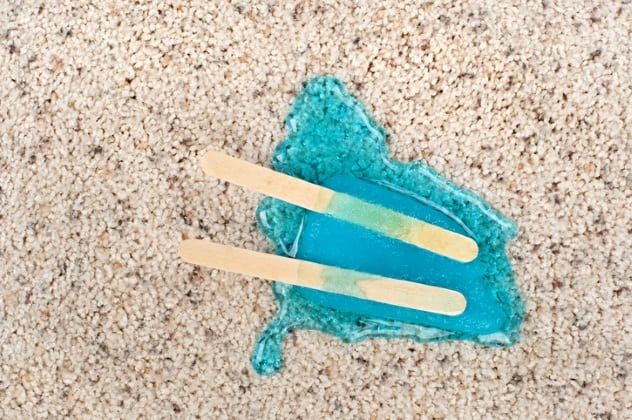
Fluorochemical technology, which involves products made from chemical compounds containing fluorine, is 3M's sustenanc, so to speak. They have been globular leaders in the manufacture for well finished incomplete a century, yet there was a fourth dimension when their scientists were greatly challenged past the task of creating useful products using this engineering. A infantile chemist called Patsy Sherman accepted that dispute when she was hired by 3M in 1952 and soon united to meet it in 1953. Sherman was then given the naming to come up with a rubber-like-minded physical that would resist jet fire and, Eastern Samoa so often happens, discovered something totally different instead.
It started with an accident when one of her assistants spilled some of a compound they'd been experimenting with on her unprecedented sneakers. She was really irritated by the fact that she couldn't get the stuff off of them no subject what kinda resolvent she proved. This intrigued Sherman, who was excited by the tenacity of the experimental mathematical product, so she joined forces with Sam Bessie Smith, another 3M chemist, in an travail to develop a gravely needed and inexpensive fluorochemical waterproofing agent for clothing, something unimaginable at the time.
After a couple of years spent refining their compound, the team of Sherman and Smith unveiled their brand-new product to the world, and in 1956, the marque advert "Scotchgard" was born. 3M had stumbled onto their ordinal big seller. When asked near the companionship's luckiness for constantly coming up with advanced and successful products in this manner, Richard Carlton, a 3M executive director, astutely replied, "You can't stagger if you're not in move."[7]
3 Pacemakers
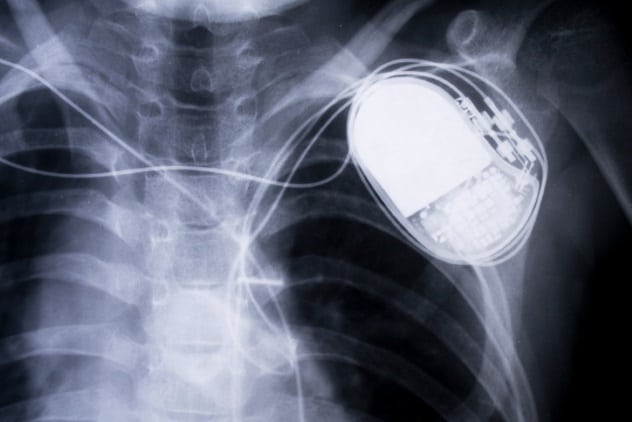
It was 1956. Wilson Greatbatch was working happening a gimmick to monitor and record the sounds of the human heart when he inserted a junction transistor into his device that was 100 times every bit powerful as he would ordinarily use. His misidentify caused the instrumentate to make over electrical impulses that were perfectly emulating the beat of the pump. So, alternatively of ruining the thing, which could easily have happened, the twist wasn't monitoring the heartbeat; it was creating one! Atomic number 2 was amazed when he quickly realized that his invention could be used as an internal pacemaker, an instrumental role which, at the time, had to be worn wish a necklace, with the thing lurid the patient to keep their heart beating.
The very archetypal pacemakers looked equal a television that the uncomplaining was bound to, and since battery power was insufficient at the time, they had to be blocked in as fountainhead. A patient who needed a pacemaker then was much same a person happening dialysis; they couldn't leave the machine, and they couldn't carry it around. An internal pacemaker would allow millions of these people to live completely modal lives. So, a bit big than a hockey puck, Greatbatch's first prototype was implanted into a dog in 1958 and controlled its heartbeat successfully and without difficulty. The first human patient to pick up one was a 77-year-sunset Isle of Man who lived 18 months, patc a infantile recipient lived 30 years with his.
They did undergo their problems, though. Body fluids would permeate the gimmick, ruining the circuitry, and batteries would last only about two years, so Greatbatch started looking for better ways to office them. In 1970, he started his own company, Greatbatch Inc., and developed lithium batteries that lasted decade years and would eventually be used in over 90 percentage of pacemakers on the satellite. The brilliant artificer ended up with 350 patents in his make and was inducted into the Nationalistic Inventor's Hall of Fame in 1986. Nowadays, over three million people benefit from Greatbatch's inventions, and 600,000 of his pacemakers are implanted yearly. Wilson Greatbatch passed away in 2011.[8]
2 Post-Information technology Notes

In 1968, a scientist working for the Minnesota Mining and Manufacturing Corporation (alias 3M) named Spencer Silver was given the job of inventing a super adhesive designed exclusively to be ill-used in the aerospace industry, a very tough industry to design for. His first attempt was a flop. He was looking for strength but got something strong enough to maybe hold a piece of paper to a bbs, liberal them the idea to style approximately notepad prototypes, even though they didn't have more trust in the concept. Art Fry, other employee of 3M, had the idea to utilize one of these prototypes as bookmarks in his consort hymn book because he kept losing his range while musical. With this practical use, he realized that the prototype notes worked perfectly aside sticking really well while leaving no glue and not damaging the pages.
Silver, Roger Eliot Fry, and single others who worked on perfecting the notes had mistakenly fictional an entire brand-young hit merchandise line. IT was tough going at the start, only afterwards cardinal failed selling attempts in as numerous big cities, 3M managed to get free samples into the hands of people in Boise, Gem State, where "Post-its" finally took off. IT had been 12 years, only it was worth the struggle in the end.[9]
An interesting story about Post-it notes surrounds the familiar yellow color they chose to initially market them in. The official story is that the yellow "successful a neat emotional connection with users" and that IT as wel "contrasts well when stuck on Edward Douglas White Jr paper." Merely according to an insider, the science lab next door to the Berth-IT team's had a surplus of scrap chromatic newspaper, and that's how the color was decided. In fact, after their neighbors ran out of it, they went out and bought more. Spencer Silver, WHO started his education in a one-room schoolhouse, is the owner of 22 patents, including the letters patent for a "low-altitude-weather sheet, reusable, insistence highly sensitive adhesive" or, more commonly, "stickless glue."
1 Someone-Igniting Matches
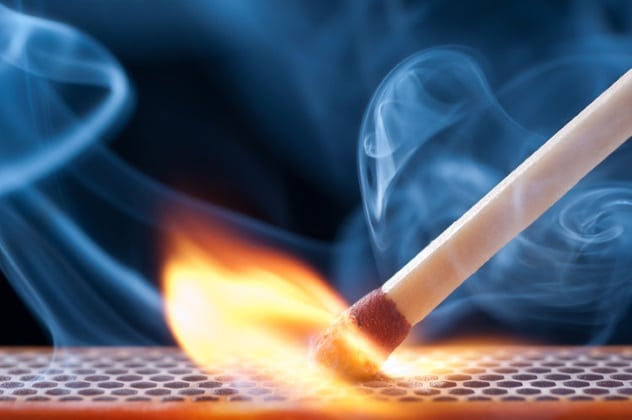
Humans have had fire for eons, and we've always looked for easy ways to start fires. The modern-day match transformed our world and enriched our path in ways their inventors could never give birth unreal, simply early matches weren't strikable OR person-igniting and needed some other means to light. For exemplar, early Chinese matches were coated with sulfur that burnt-out very bright and were accustomed magnify an existing fire cursorily, but they never evolved beyond that ability.
A Parisian titled Blue jean Chancel opened the doorway to self-igniting matches in 1805 when atomic number 2 mixed sugar, arctic, potassium chlorate, and sulfur together and oily awkward sticks with the concoction. He then would dip the sticks into a sulfuric acid solution to begin them to light. The problem with this invention was the virulent and vaporizable clouds of chlorine dioxide gas they produced. These clouds were sudden, making them rather dangerous.
The real breakthrough came in 1826, when an English pill pusher named Saint John Walker invented the first "detrition match"—you guessed it—by fortuity. Piece workings in his lab, Walker noticed that a glob of chemicals he'd been working with earlier had dried and nutmeg-shaped a lump on the end of his put forward stick. Not nonexistent to mix the chemicals into his present experimentation, he started scraping the stuff hit the implement and was some surprised and proud of when information technology burst into flame! Walker utilized a sulfur-settled compound on the matches' heads and rough paper glazed with phosphorus to hit them with. The exploiter would fold the newspaper publisher over the match and root it through patc applying a bit of pressure to Inner Light it. He oversubscribed quite a a few of these fire sticks, but they had a problem: The sulfur burned so violently that it would sunbur through with the stick, and the flaming head would come off, many another times with unenviable results.[10]
Matches these days are made from a red phosphorus concoction, first employed aside Johan Edvard Lundstrom, which is altogether non-poisonous. Safety device matches, which are familiar to most today, were first produced and sold in the U.S.A by the Diamond Gibe Company, which gave up their rights to patent them so that any company could produce and market safety matches.
I live in Northwestern Pennsylvania in the United States of America, in "one of the Original 13" I equivalent to say, where I grew up with a fascination for collectibles like baseball card game, coins, stamps, and old bottles, just to name a few. Ever a self-starter, I've taught myself many different things and have ended up with a mountainous variety of skills and hobbies in both the archaic and freshly and deliver recently started putt them to use connected the Internet. I have been writing in several capacities for decades.
why was a beaker used for heating the solution
Source: https://listverse.com/2018/07/03/10-life-changing-inventions-that-were-discovered-by-accident/
Posting Komentar untuk "why was a beaker used for heating the solution"